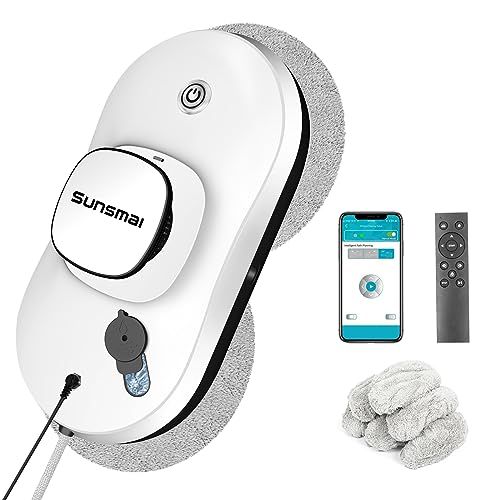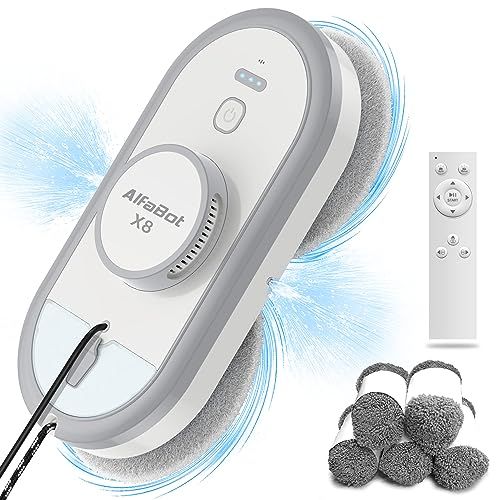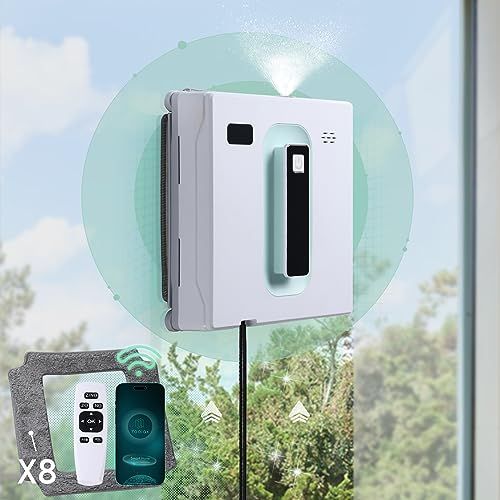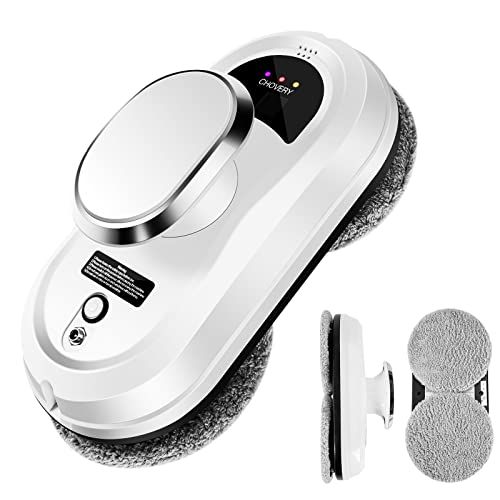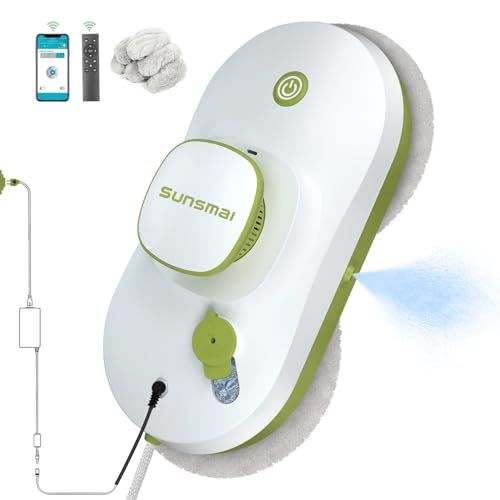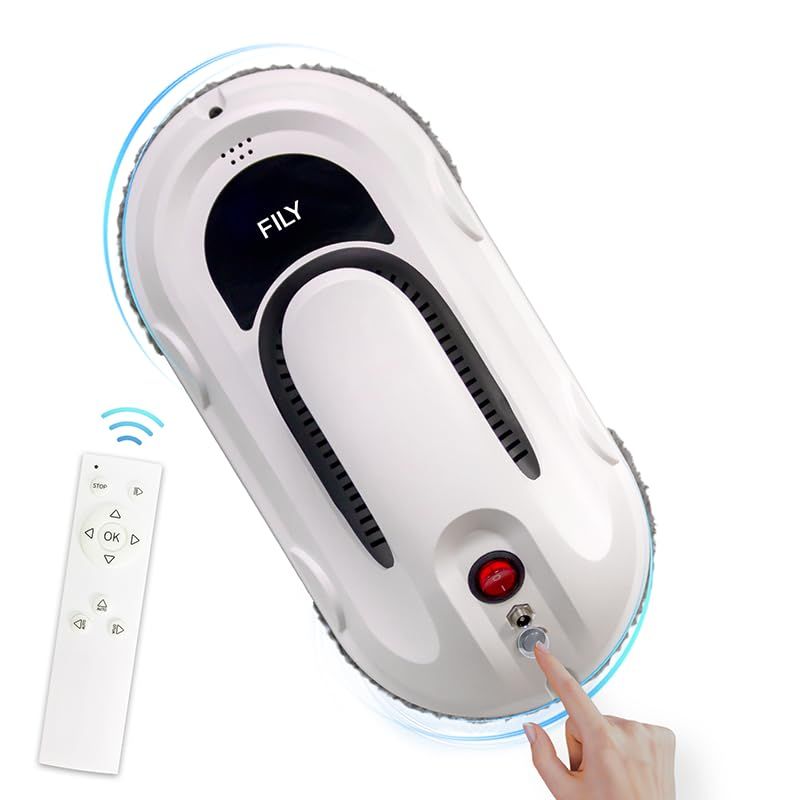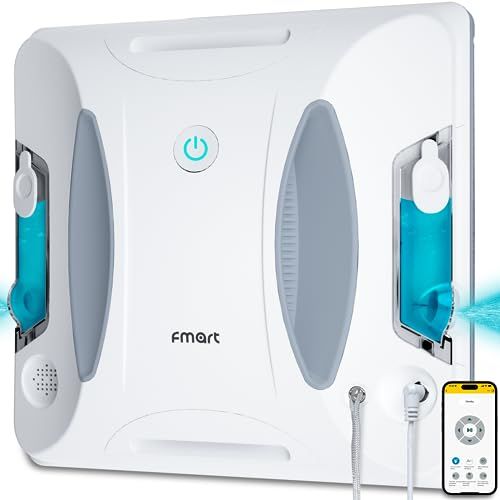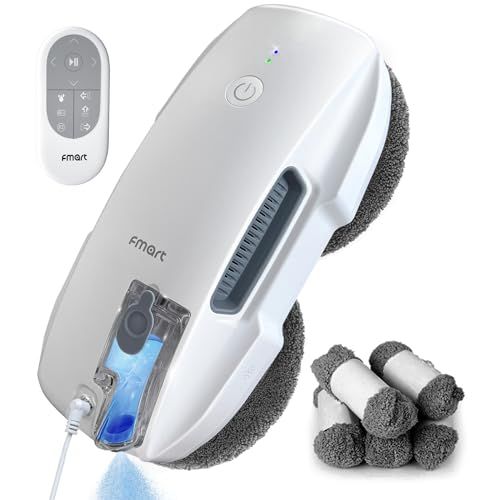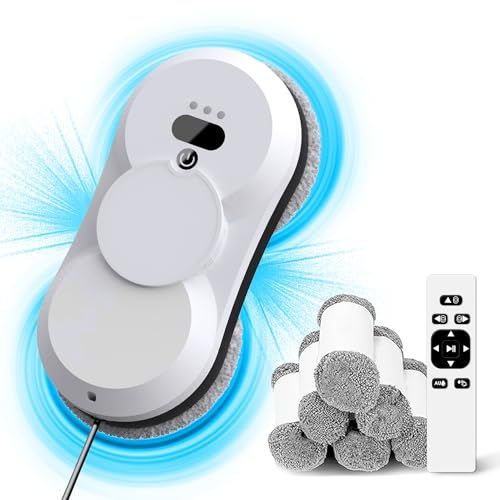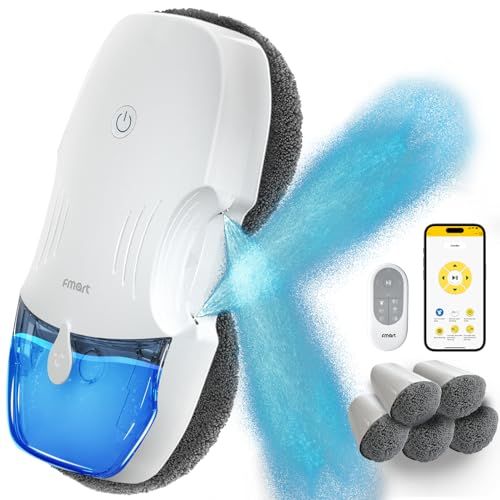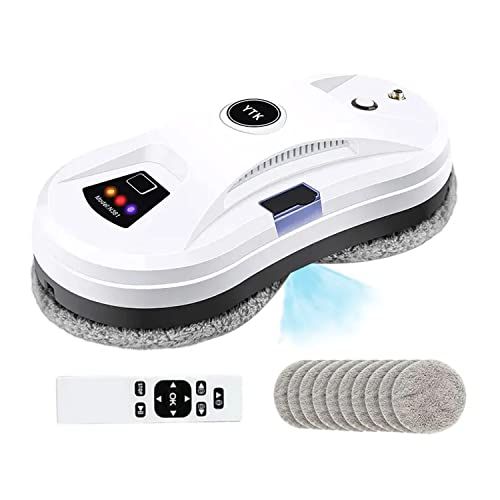
Robotic window cleaners are an innovative new type of cleaning technology designed to automate the tedious task of washing windows. These clever devices utilize advanced sensors, motorized tracks, and spinning microfiber pads to scrub glass surfaces sparkling clean.
Unlike manual window washing, robotic cleaners allow you to clean windows efficiently with minimal effort. Just secure the robotic device to the window frame, turn it on, and let it handle the dirty work while you focus on other tasks. It will automatically scrub the glass, sucking up any drips to leave a spotless, streak-free finish.
Robotic window cleaners are a great solution for effectively cleaning large or hard-to-reach windows that would otherwise require risky manual washing. Their small semi-circular shape allows them to navigating around obstructions and clean tight corners that human hands cannot easily reach. No more relying on tall risky ladders or paying for professional window washing services.
These revolutionary appliances make window cleaning safe, fast, and convenient. They save homeowners and businesses time and energy on one of the most frequent cleaning tasks. Robotic window cleaners are a worthwhile investment for anyone wanting to automate the tiresome chore of washing windows.
Types of Robotic Window Cleaners
There are 3 main types of robotic window cleaners:
Suction Robots
Suction robots use vacuum suction pads to cling to the window surface. The robot crawls along the window while rotating its scrubbing pads or microfiber cloths to clean the glass. Suction robots rely entirely on suction for stability, so they may fall if the window surface becomes too dusty or wet.
Magnetic Robots
Magnetic robots use magnets to adhere to window frames. The magnets allow the robot to transition between panes while cleaning multi-pane windows. Magnetic robots are ideal for cleaning outside windows since they can handle weather conditions better than suction robots. However, they only work on steel-framed windows.
Hybrid Robots
Hybrid robots combine suction pads and magnets. The suction adheres to the glass while the magnets provide stability on the window frame. This hybrid approach makes the robots more versatile for cleaning different window types and surfaces. Hybrid robots often have the most advanced navigation and safety features.
Key Features
Robotic window cleaners have advanced features that make cleaning windows faster, easier, and safer. Here are some of the most important features to consider:
Navigation Technology
Robotic cleaners use intelligent navigation technology to map out the area of windows and determine the most efficient cleaning path. Sensors and laser navigation allow the robots to clean without missing spots or getting stuck. Units with LiDAR technology create 3D maps to navigate large or complex windows.
Safety Sensors
For safety, units are equipped with sensors to avoid falls and collisions. Edge sensors detect when the robot is close to the edge of the window and cause it to change direction. Some also have all-direction sensors to prevent crashes into walls or obstacles.
Cleaning Pads
The cleaning pads are the main tool that scrubs and cleans the windows. Microfiber pads pick up dirt and grime without leaving streaks. Some models have vibrating pads for more thorough scrubbing. Pads are removable and machine washable after use.
Reach Extension
Robotic cleaners can reach much further than manual methods. Extension cords allow the robots to clean multiple floors of windows from a single starting point. Some high-end models also come with remote controls for directing the robots to target hard-to-reach spots.
Charging Stations
Robots return to charging stations when power runs low. This allows for uninterrupted automated cleaning. Charging stations can be affixed to windows using suction cups or other mounts. The charging process is quick, often 30 minutes or less to fully recharge.
Benefits of Robotic Window Cleaners
Robotic window cleaners provide several key benefits compared to manual cleaning:
Saves time and effort - Robotic cleaners automate the cleaning process, saving you the hassle of scrubbing windows yourself. Just attach the robot to the window and let it handle the hard work.
Cleans hard to reach areas - Robotic cleaners can easily access tricky spots like corners, edges, and high windows that are difficult or dangerous to reach manually. Their small size lets them thoroughly clean the entire window surface.
Improves cleaning efficiency - Robotic cleaners clean using optimized routes and patterns to ensure every part of the window is covered efficiently. This results in superior cleaning compared to manual methods.
Reduces risk of injury - Manually cleaning tall or awkwardly positioned windows can be precarious and lead to falls or other injuries. Robotic cleaners provide a safer hands-free cleaning solution without any height or reach risks.
Considerations When Purchasing a Robotic Window Cleaner
When selecting a robotic window cleaner, there are a few important factors to consider:
Initial Cost
Robotic window cleaners vary greatly in price. Basic models start around $100, while higher-end options with more features can cost $500-800. Consider your budget, but know that more expensive models generally have longer battery life, stronger suction and cleaning power, and wifi connectivity. The investment can be worth it if you have a lot of large or hard-to-reach windows.
Maintenance Requirements
Most robotic cleaners require periodic maintenance like changing pads, filters, and brushes. Higher quality cleaners allow easy access to replaceable parts. Check how intuitive and straightforward maintenance will be before purchasing.
Noise Levels
Robotic cleaners can be loud when in use. Measure the decibel level (dB) and look for options below 65dB if noise is a concern. Quieter models tend to cost more.
Effectiveness on Certain Windows
Consider window size, location, shape, and material. Robotic cleaners work best on standard rectangular windows that are easy to access. Odd shaped windows, skylights, or very large windows may present challenges. Also check if the model is safe for various window materials like vinyl, glass, or acrylic.
Popular Brands
When shopping for a robotic window cleaner, you'll come across some well-known brands. Here are some of the most popular options to consider:
Ecovacs
Ecovacs is one of the leading robotic window cleaner brands. Their Winbot series offers advanced cleaning technology like vacuum suction and an intelligent navigation system. Models like the ECOVACS Winbot W1 Pro are designed for frameless windows.
Hobot
Hobot is another major brand in robotic window cleaners. They are known for quality construction and innovative features like edge cleaning. The HOBOT-298 is a top pick that can handle large expanses of glass.
Alfawise
For budget-friendly options, look at Alfawise. The Alfawise Winbot W800 Pro delivers solid cleaning power at a more affordable price point. It's a great starter robotic window cleaner.
Gladwell
Gladwell is an up-and-coming player in the robotic window cleaner space. The Gecko Robot Window Cleaner is a bestseller praised for its safety, effectiveness, and ease of use.
Cop Rose
Cop Rose offers mid-range models like the X6 Pro Robot Window Cleaner. It combines strong suction, dual side brushes, and built-in UV light sterilization. Overall, Cop Rose provides good value for money.
There are clearly many excellent robotic window cleaner brands on the market today at various price points. Carefully considering the features and capabilities of each will help you select the right model for your home or office.
Pricing
Entry level models usually cost between $100-$300. They have basic cleaning functions and features but get the job done for light cleaning needs. Some popular brands are Hobot and Alfawise. Entry level models are best for 1-2 story homes with less windows.
Mid-range models cost around $300-$700. They often have improved features like multiple cleaning modes, longer battery life, and stronger suction. These are suitable for 2-3 story homes with more windows. Popular mid-range brands are Ecovacs and Gladwell.
High end models cost $700-$1500. They have premium features like AI navigation, voice control, and extra long run times. Some even clean in a zigzag pattern for better coverage. High end models work great in multi-story homes with lots of windows. Top brands are Hobot, Ecovacs and Skyline Robotics.
Features by Price
Budget Models
Basic dry cleaning capabilities with simple up and down motions
Good for cleaning easily accessible windows, low-rise buildings
Limited safety features
Short 1 hour battery life
Simple controls via remote or buttons on device
Mid-Range
More advanced side-to-side motion for better cleaning
Can handle 2nd floor and higher exterior windows
Advanced safety features like obstacle avoidance
Longer 2-3 hour battery life
App control in addition to remote
Some models have wet cleaning capabilities
High End
Smart navigation with LiDAR, mapping, AI path planning
Can clean windows on high-rise buildings, commercial buildings
Very advanced safety features like aircraft-grade materials, parachute deployment
Long 5+ hour battery life
App control with voice assistance integration
Advanced wet cleaning with detergent tanks, spinning washable pads
Some models can clean interior windows, not just exterior
Use and Maintenance
Installing your robotic window cleaner is an easy process. Most models come with suction cups or grip pads that allow the robot to attach to windows, as well as a docking station that must be mounted near an outlet. Be sure to follow the manufacturer's instructions for getting your robot set up.
Charging is a crucial part of maintaining your window cleaning robot. Robotic cleaners will run for 30-90 minutes on a full charge, depending on the model. Always recharge after each use by placing the robot on its docking station. Most robots will automatically recharge when placed on the dock.
Over time, the cleaning pads on the robot will get dirty and wear out. Check them regularly and replace as needed. Replacement pads are easy to find from the manufacturer or online retailers. Follow instructions to remove the old pads and click the new ones into place.
Properly storing your window cleaning robot will help extend its lifespan. Keep it docked when not in use so the battery doesn't fully discharge. You may also need to periodically run a cleaning cycle on the robot with just water to keep the internal parts clean. Avoid storing in very hot or cold temperatures.
Conclusion
Robotic window cleaners offer a convenient, hands-free way to keep your windows sparkling clean. As we've covered, they come in different types like vacuum suction models and water-wash models, with features like safety tethers, removable pads, and smart navigation.
The key benefits are the time and effort they save you from manual cleaning. They can thoroughly clean windows that are difficult to reach, while avoiding risks from working at heights. Models with various settings and accessories can handle different window sizes, types, and conditions.
Consider how large your windows are, whether they are flat or curved, and any obstructing frames or screens. Your budget will determine what features are available. Research popular brands like Ecovacs, Hobot, Alfawise, etc to compare quality and performance for the price. With routine maintenance like checking batteries and replacing pads, robotic cleaners can deliver spotless windows with minimal effort from you.
Overall, robotic window cleaners are an efficient cleaning innovation that make an otherwise challenging task much easier. If streak-free windows are a priority for you, a robotic cleaner can be a worthwhile investment for your home.
Window Cleaners comparison
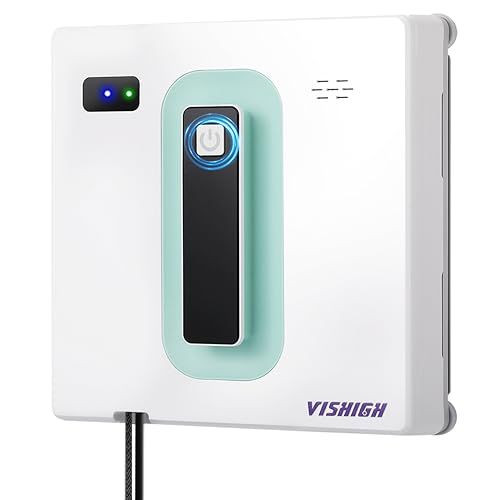 | 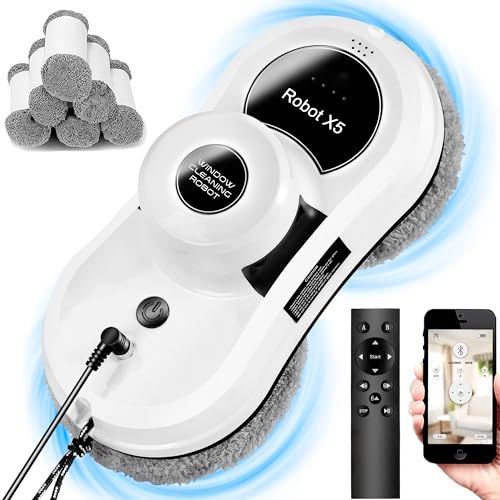 | 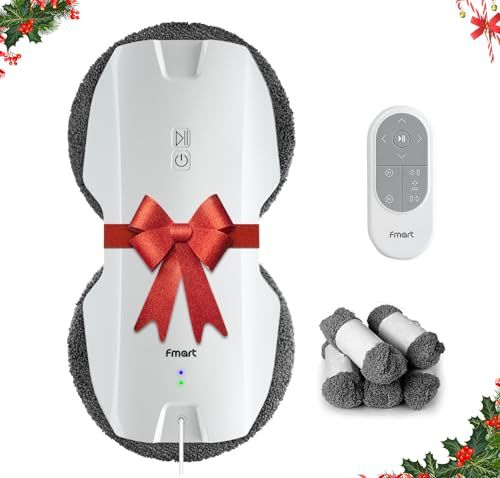 | 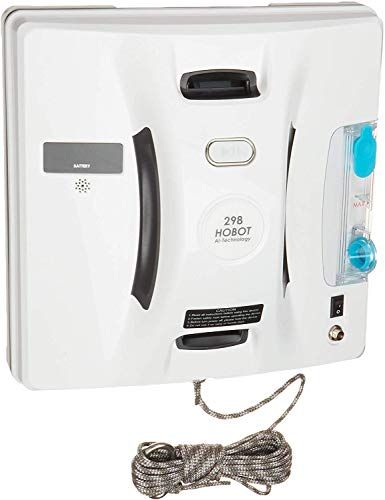 | 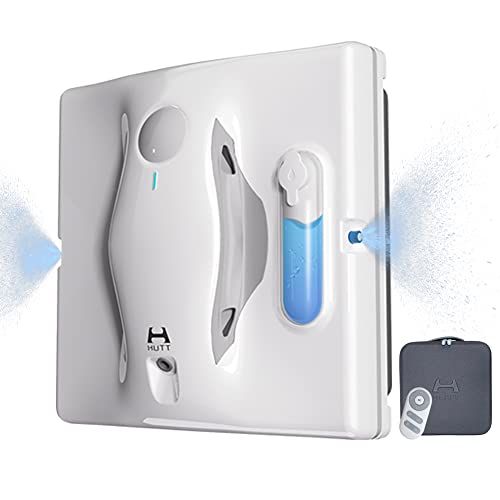 | |
|---|---|---|---|---|---|
| Model | HCR-1 | Hobot-298 | W8 | ||
| Brand | Vishigh | Sophinique | FMART | HOBOT | H HUTT |
| Weight | 5.35 pounds | 2.09 pounds | 2.2 pounds | 2.82 pounds | 2.8 pounds |
| Color | White and Green | White | T8pro | White | White |
| Batteries | 1 Lithium Ion batteries required. (included) | 2 AAA batteries required. (included) | 1 Lithium Ion batteries required. | 1 Lithium Polymer batteries required. (included) | 1 Lithium Ion batteries required. |
| Battery life | 20 minutes | 30 minutes | 3 months | - | 30 minutes |
| Country of origin | - | China | China | Taiwan | China |
| Special feature | Obstacle Avoidance, Smart | Wheels | Smart | - | AI Mapping in 3 Paths, Water Spray in 2 Ways, Real Time Voice Prompt, Edge Detection with Laser Sensors, 80ml Large Water Tank AI Mapping in 3 Paths, Water Spray in 2 Ways, Real Time Voice Prompt, Edge Detection with Laser Sensors, 80ml Large Water Tank See more |
| Product dimensions | 8.5"L x 8.5"W x 2.67"H | 11.75"L x 5.7"W x 4.75"H | 11.41"L x 5.59"W x 3.18"H | 4.53 x 2.69 x 1.59 inches | 9.5"L x 9.5"W x 3.2"H |
| Model name | HCR-1 | - | - | - | W8 |
| Control method | - | App | - | - | Remote |
| Voltage | 110 Volts (AC) | 240 Volts | 14.8 Volts (DC) | - | 24 Volts |
| Capacity | - | - | - | - | 80 Milliliters |
| Power source | Battery Powered | Corded Electric | Battery Powered | - | Corded Electric |
| Price | $216 | $179.99 | $113.99 | $399 | $299 |
FAQ
What are robotic window cleaners?
Robotic window cleaners are automated devices that are designed to clean windows and glass surfaces. They use technology like sensors, artificial intelligence, and robotic arms to navigate windows and remove dirt and debris without human assistance.
How do robotic window cleaners work?
Most robotic window cleaners have suction pads or magnetic wheels that allow them to attach to glass surfaces. They use built-in sensors to map the area of the window and plot the most efficient cleaning path. The robot then uses rotating brushes, squeegees, or microfiber pads to scrub the glass. Some models also spray cleaning solution onto the glass.
What are the benefits of using a robotic window cleaner?
Robotic window cleaners can clean hard-to-reach windows safely without ladders or risks of falling. They save time and effort spent manually washing windows. Robotic cleaners also provide consistent and thorough cleaning across the entire window surface. Some models can be scheduled to run automatically at set times.
Are robotic window cleaners safe to use?
Most robotic window cleaners have safety features to prevent falls and damage. This includes sensors to detect edges, movement slowdown features, and emergency stop buttons. As long as the user reads and follows the product instructions, robotic window cleaners are generally safe for residential and commercial use.
What types of windows can robotic cleaners handle?
Robotic window cleaners are designed for use on most flat and smooth glass surfaces like windows, glass doors, glass partitions, mirrors, etc. Some models can transition between glass panes via frames. Heavily textured glass or skylights may pose challenges for navigation.
How often do the cleaning pads need to be changed?
The cleaning pads or microfiber cloths on a robotic window cleaner should be changed according to manufacturer recommendations, generally after every few cleaning sessions. More frequent pad changes may be needed for dustier or dirtier windows. Replacing pads regularly helps maximize cleaning performance.
Do robotic window cleaners require maintenance?
Like any appliance, robotic window cleaners require some periodic maintenance. The main areas to maintain are the pads, brushes, cleaning solution tanks, batteries, and sensors. Keeping these components clean, unclogged, and in working order allows the robot to function optimally.
Can robotic window cleaners clean outdoor windows?
Most robotic window cleaners are designed for indoor use only. Outdoor windows pose risks like rain, wind, and lack of flat surfaces for the robot to navigate safely. There are some heavy-duty robotic cleaners made to handle outdoor glass, but these are specialty industrial models.
What safety precautions should be taken when using a robotic window cleaner?
Read the instruction manual thoroughly and follow all directions.
Check the window surface for any obstacles, framing, or texture issues.
Keep people and pets away from the area during cleaning sessions.
Do not leave the robot unattended or operate near ledges.
Monitor the cleaner during first few uses to check its performance.
How much do robotic window cleaners cost?
Robotic window cleaner prices range from $100 to $1000+ depending on the features and brand reputation. More affordable models around $200 are suitable for basic home use while advanced commercial-grade cleaners cost $800 and up. Consider the window sizes, frequency of use, and navigation capabilities when choosing a robotic cleaner.
